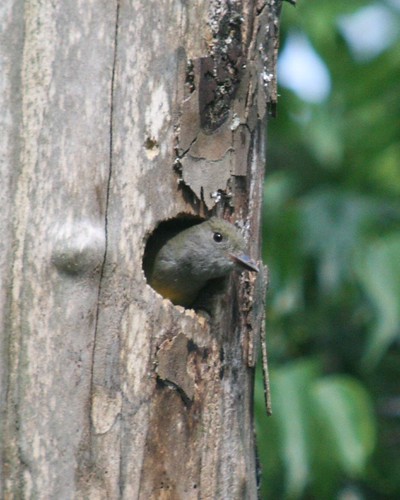The comings and goings of the flycatchers were good fodder for one of my purposes of this particular trip: practice digiscoping. So I set up my tripod, scope and camera, attached the remote shutter release, and then began trying to get a bird in scope long enough for me to get it in focus and take a few pictures.
The results are varied, with none of the pictures coming out excellent. A few were underexposed. Many were slightly overexposed. None had the bird in super sharp focus. As I hinted in the previous post, I am not sure if I need to change my technique or my expectations. Here are a couple of the photos that I felt were on the better end of the menagerie that I captured.


1 comment:
Are these sharpened at all, or straight out of the camera? One thing to be aware of (and you may already know this) is that no image taken from a digital SLR like yours is going to be perfectly sharp - that is really only achieved in post-processing with Photoshop or another image editing tool. Canon (and other DSLR makers) intentionally do not oversharpen in the processing of the image to allow for maximum flexibility in the final product. It is why point and shoots can sometimes appear to produce better results out of the gate from a DSLR, because they have some heavy-handed processing applied to the images internally that DSLRs do not do. They make for good holidya snaps but can't really compete with a DSLR in terms of range; what you can make out of the final image with some effort in an editing tool.
http://www.usa.canon.com/content/Handling/EOS_Digital.pdf
While this document is geared more toward the professional (EOS-1) line of cameras, it still has a very worthwhile chart on page 26 that explains the difference between how RAW or minimal parameter JPGs will look compared to Point and Shoot or DSLRs with high parameter settings.
I do agree these are softer than other pictures you have shown with the 100-400 though. I don't have any direct experience using a digiscope, but I have used a 1.4x extender on my 100-400 and the quality does degrade. I am wondering if this is a similar effect.
Post a Comment